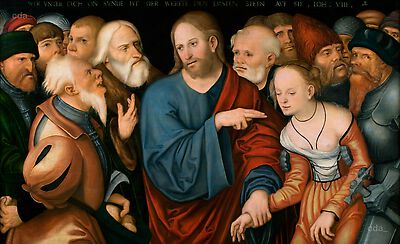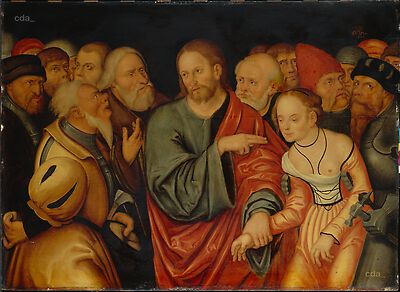- Attributions
-
Lucas Cranach the Younger
Lucas Cranach the Younger and workshop
Attributions
| Lucas Cranach the Younger | [Chrysler Museum of Art, revised 2015] |
| Lucas Cranach the Younger and workshop | 'possibly with workshop participation' |
- Production dates
- 1532 - 1537
after 1537
Production dates
| 1532 - 1537 | [Chrysler Museum of Art, revised 2015] |
| after 1537 | [Friedländer, Rosenberg 1979, No. 364] |
- Dimensions
- Dimensions of support: 74.3 x 121.9 cm (29 1/4 x 48 in.)
Dimensions
Dimensions of support: 74.3 x 121.9 cm (29 1/4 x 48 in.)
Dimensions including frame: 96.5 x 144.8 x 8.9 cm (38 x 57 x 3 1/2 in.)
[Chrysler Museum of Art, revised 2015]
- Signature / Dating
Artist's insignia at the upper right after inscription: winged serpent with elevated wings of a bat.
Signature / Dating
Artist's insignia at the upper right after inscription: winged serpent with elevated wings of a bat.
[Chrysler Museum of Art, revised 2015]
- Inscriptions and Labels
On top: 'WER VNTER EVCH ON SVNDE IST DER WERFFE DEN ERSTEN STEIN AVF SIE . IOH . VIII …
Inscriptions and Labels
Inscriptions, Badges:
On top:
'WER VNTER EVCH ON SVNDE IST DER WERFFE DEN ERSTEN STEIN AVF SIE . IOH . VIII .'
[cda 2015]
- Owner
- Chrysler Museum of Art, Norfolk, Virginia
- Repository
- Chrysler Museum of Art, Norfolk, Virginia
- Location
- Norfolk
- CDA ID
- US_ChrMA_71-484
- FR (1978) Nr.
- FR364
- Persistent Link
- https://lucascranach.org/en/US_ChrMA_71-484/


